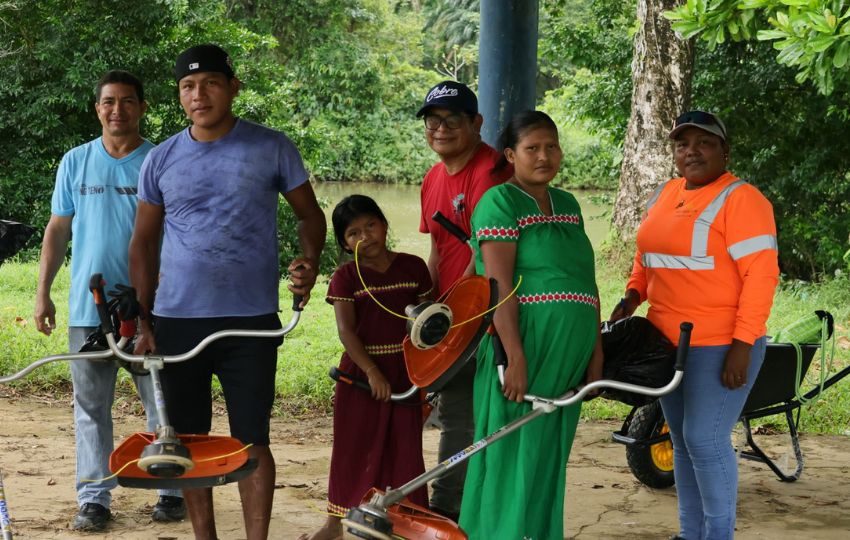The Panama-David Train Route Land Use Plan

The Minister of Housing and Territorial Planning indicate that, although the route is under analysis, the aim is to define the areas of the country by activities, and to visualize the development poles through which the Panama – David train will pass. The Minister of Housing and Land Use Planning (Miviot), Jaime A. Jované C., explained the need to have a Land Use Planning Law. Here is the issue “To move from a plan to a legal instrument that defines the development zones of the country, whether they are for tourism, farming, environmental conservation, and housing, among other activities.” The idea is that this new legislative proposal that is still under study, contemplates the development that will be generated by the railway between Panama and David. Jované also spoke about the changes in the preferential interest law. The aim is to establish an amount that really responds to the need for which it was created, to avoid the burden being placed on the State. Annually, a budget of $300 million is allocated to cover the rates that the State subsidizes to banks for the purchase of homes.
Are there any plans for land use planning?
We will not change the law. We will continue with the Territorial Planning program. We have plans in this regard in terms of tourism that have been resolved in several communities. We still have to deal with the Boquete area and other zones, in order to have the area defined. The territorial planning plan at the national level is what we want to put into law of the Republic. We are in a review process that should include the influence of the construction of the Panama-David train line. This will create development poles that should be contemplated in the territorial planning plan. We have a team working with all these ministries so that the plan absorbs this type of use.
How will price speculation be avoided on the lands through which the road will pass?
This has been reviewed and there has been discussion about what would be the correct way to avoid speculation. First, the route is not clearly established. The development plan will contemplate development to the extent possible to avoid such speculation.
When will the route be drawn up?
That is up to the railway department. They are already studying the routes established in accordance with the studies.
What plan will you then implement to define land use by activity?
That is why the land use plan exists, as a necessity. We have to organize the country’s growth. When this plan becomes a law of the Republic and development is established and defined with limits, this development will be defined for the farming, tourism and housing areas. The latter should be more vertical to take advantage of the development of the areas.
Do you have a date to present it to the Assembly?
We don’t have the exact date, but there is a plan. We have to make the local and national regulations. All of that has to be covered.
Does it require the participation of citizens and local governments?
Yes it does. Citizen participation, although not binding, is very important. When I say binding, I mean that ideas are taken into account and debated between the authorities and the population to reach the best consensus.
The preferential interest law expires in December 2025. Is the Mulino administration interested in renewing it?
Yes, definitely.
With the same parameters?
That is why we have met with developers at the local and national level, as well as with the banking system, which we must involve because it has lost its appetite to continue financing this type of housing because we have accumulated debts of $500 million. The preferential interest generates an approximate debt of $300 million annually. The intention with them is to be certain that the payments will be budgeted, that they will be honored in a timely manner so that a preferential interest rate is attractive for all these families.
The value of the housing units benefiting from preferential interest will be reviewed. What changes will be implemented later?
Yes, that is why we have been meeting with those involved. The current law is for a sale price of up to $120,000. We are reviewing it because we really think that it has to be a social interest home and that these amounts must honor the term. Currently there is a limit of $120,000 with coverage for the State for up to eight years. It covers up to 10 years at 100% up to $40,000, and from $40,000 to $80,000 it moves in stages. The plan is to review and reach an agreement, so that the plan for the State is not so burdensome in the accumulation and is more staggered. This gives these families the opportunity to make the jump from their preferential interest mortgage to the normal mortgage not so dramatic that it doubles the monthly payment. An agreement will be reached so that it can gradually increase and when the preferential interest expires they can continue with the monthly payment in the banking system.
Although the government has to make budgetary adjustments, developers complain that these types of social interest projects are on hold and that suppliers have reduced their sales by up to 40%. What is the government going to do about this issue?
We have met with the Ministry of Economy and Finance and the contracting developers, with the banks, to be able to review how we can continue supporting this large mass of families who need social interest housing. Definitely, a bonus as a subsidy is not contemplated. But preferential interest housing continues with a subsidy; from zero to $40 thousand it is 100% of the preferential interest that is subsidized in these homes. In addition, these homes have the zoning where they are developed, which also have a subsidy from the State. In addition to this, the families that apply for these homes, normally have minimum wage, do not pay income tax because they receive other types of subsidies. There are a series of accumulated subsidies, and what should be reviewed is the cost of the home so that it is accessible to the mortgage that the banking system grants.
What solutions can you propose in this regard? Do you convince developers to build new projects?
What we are really reviewing is how to make this large group of buying families credit subjects in the banking system. It is a reality, so that they can be banked. We have been looking at the possibility of having special rates on preferential interest so that their bill is not penalized so high. We are reviewing with the Housing Savings Fund (Fondhabi) how to arrange or structure a support for these families and lower the risk that the bank values in that particular type of housing.
Is it like a kind of guarantee?
Yes, as a type of guarantee that gives them the initial payment at preferential interest rates as established by law and that they can be credit subjects as established by the system so that they do not depend exclusively on a State subsidy. They will start by absorbing the family mortgage commitment, and review the structure of this subsidy over the years with the banking system.
What budget does the ministry plan for next year?
The budget for the ministry is $118 million, of which $103 million are for investment. The programs include plans for the construction of housing for continuity. President Mulino will continue with the State projects, regardless of the administration in which they were started. Based on that, we have the Altos de Los Lagos second stage project, in which we are about to deliver 300 housing units, another in Mickey Sierra in San Miguelito, where 200 have been delivered and the other half is yet to be delivered. In Aguadulce, 181 housing units are being rescued and we have begun the process, in coordination with the National Institute of Aqueducts and Sewers (Idaan), to coordinate the delivery of these homes. We have not been able to do so because they do not have water. We are working with Idaan to guarantee the water supply, the management of wastewater and the infrastructure necessary to deliver them.
What will Miviot’s investment budget be used for?
We do not have any new projects at the moment, but we are continuing with Techos de Esperanza, the progress plan, and housing improvements. We are continuing with the projects that have a long-term contract, and what remains to be built are some other projects in Colón, Arraiján, for example.
How much do these projects balance the housing deficit?
Panama has traditionally been unable to balance the scales of the housing deficit. But the exercise makes an effort to prevent it from increasing. In the housing deficit with non-governmental institutions there is a difference because one is quantitative and the other is qualitative. We deliver housing, but if these institutions are not guaranteed water, they do not have streets, everything adds up to a qualitative deficit. This government management is focused on resolving infrastructure issues so that these homes are calculated as figures to reduce the housing deficit.
With the budget you have, will you be able to meet the outstanding payments to developers?
There are items to make payments to the developers and even the management of the payment of the Solidarity Bonus that we are working on. This week we processed the payment of $20 million, which is equivalent to 2 thousand housing units of the Solidarity Bonus, and we continue working so that the accumulated bill that we received from the years 2021, 2022, 2023 and 2024 can be addressed in the coming days, including leaving a small amount to pay the accumulated debts.
Are you going to pay off those debts in the next few months?
Yes, that is the approach. As of the date of expiration of the Solidarity Bond law, the debt amounts to between $90 and $120 million. We are left in what we call the transitional period in which we were complying with the norm, but in administrative processes we had not completed all the documentation, approximately another $70 million additional that we still have to process and pay.
“A bonus as a subsidy is definitely not contemplated. But housing continues with a preferential interest subsidy; from zero to $40 thousand it is 100% of the interest that is subsidized in these homes.”





